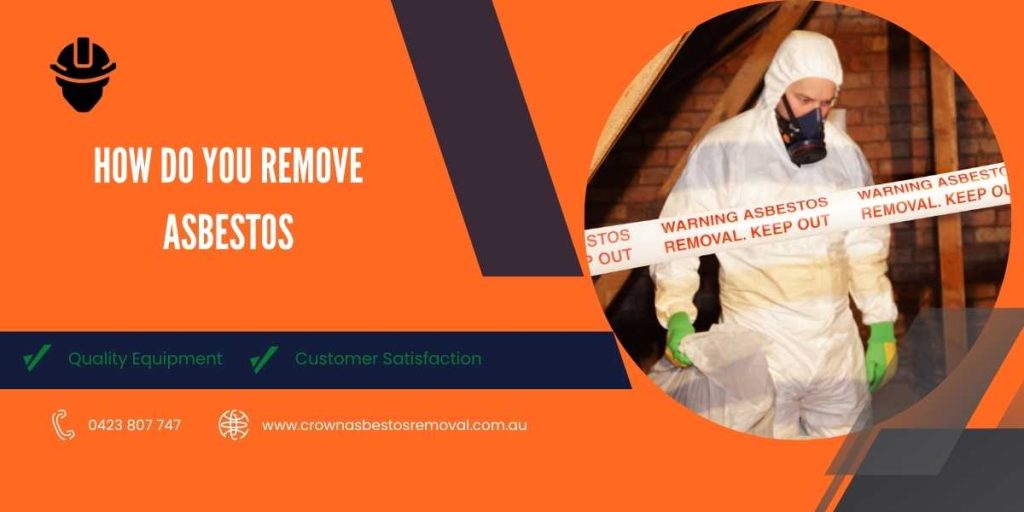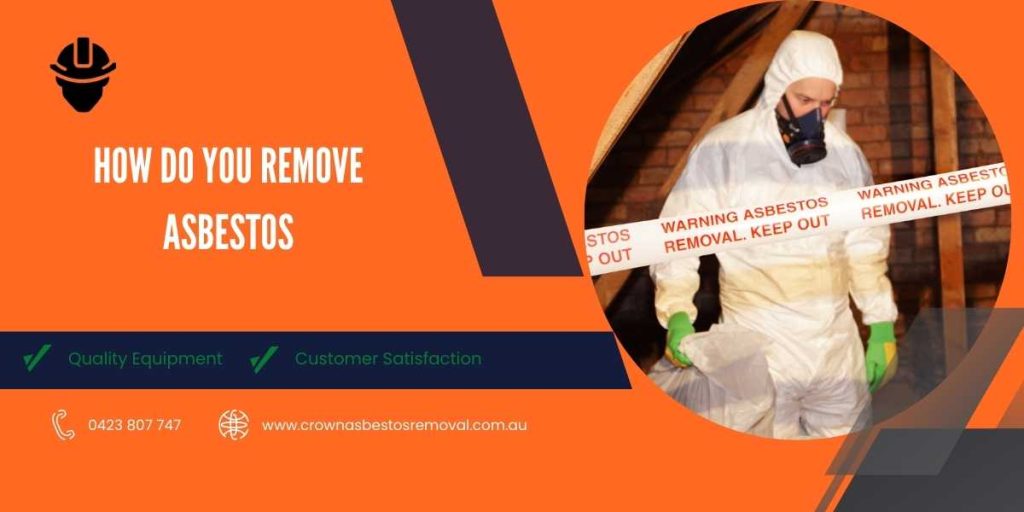how do you remove asbestos

Introduction
Asbestos, once a popular building material due to its fire-resistant and insulating properties, is now known to be highly dangerous. Exposure to asbestos fibers can lead to severe health issues, including lung cancer, asbestosis, and mesothelioma. Proper asbestos removal is critical, both for the safety of individuals and to comply with legal regulations. This article will walk you through the process of asbestos removal, detailing when it’s necessary, how to do it safely, and why professional help is often essential. Learn more about our professional asbestos inspection services by visiting our Asbestos Inspection Canberra page.
1. Understanding Asbestos
Asbestos is a naturally occurring mineral that was widely used in building materials throughout the 20th century. It is commonly found in insulation, roofing, ceiling tiles, and flooring. Although it’s effective at insulating and fireproofing, asbestos fibers become hazardous when disturbed, turning into airborne particles that can be inhaled.
There are several types of asbestos, including chrysotile, amosite, and crocidolite. All pose serious health risks, particularly when fibers are inhaled or ingested, as they can lodge in the lungs and other tissues, causing inflammation and scarring that can lead to diseases years or even decades later.
2. When to Remove Asbestos
Not all asbestos-containing materials (ACMs) need to be removed immediately. In some cases, if the materials are undamaged and sealed, they can remain in place. However, asbestos must be removed if:
- It is damaged and crumbling.
- Renovation or demolition work is planned.
- The materials are in poor condition or have been exposed to wear.
Before deciding on removal, it’s critical to have a professional inspect the area to assess the condition of the asbestos.
3. DIY vs. Professional Asbestos Removal
Attempting to remove asbestos yourself can be extremely dangerous. The moment asbestos is disturbed, tiny fibers can be released into the air, putting anyone nearby at risk. While in some areas, DIY removal is allowed under specific guidelines, it is strongly recommended to hire a licensed professional. Professional asbestos removal:
- Ensures all legal and safety standards are met.
- Minimizes the risk of exposure to asbestos fibers.
- Properly disposes of asbestos waste, as required by law.
4. The Asbestos Removal Process
Step 1: Inspection and Testing
The first step is to conduct an inspection. A licensed asbestos inspector will sample suspect materials, sending them to a laboratory for analysis. If asbestos is detected, removal is the next step.
Step 2: Preparation and Containment
Before removing asbestos, the area must be sealed off to prevent fibers from spreading. This involves:
- Setting up negative air pressure units to contain the fibers.
- Sealing doors, windows, and ventilation systems.
- Workers wearing full protective gear, including masks and suits.
Step 3: Removal Procedures
Asbestos is removed using specific methods to limit fiber release. The most common technique is the wet removal method, where materials are sprayed with water to prevent dust. Small pieces of asbestos can be removed using glove bags, which are sealed plastic bags that encase the asbestos-containing material.
Step 4: Disposal of Asbestos
After removal, asbestos must be double-bagged in special waste disposal bags that are tightly sealed. These bags are labeled and transported to licensed asbestos disposal facilities, where they are handled according to environmental regulations.
Step 5: Post-Removal Cleaning and Air Testing
Once the asbestos is removed, the area is thoroughly cleaned with HEPA-filter vacuums to eliminate any lingering fibers. Air testing is then performed to ensure the space is safe before it can be used again. If the air quality passes inspection, the area can be declared asbestos-free.
5. Safety Precautions
Safety is the highest priority during asbestos removal. Workers wear personal protective equipment (PPE) such as full-body suits, gloves, and respirators. Containment measures ensure asbestos fibers don’t spread to other areas. It is crucial to prevent asbestos from entering ventilation systems, and negative air pressure systems help to trap any airborne fibers.
In the event of accidental exposure, immediate safety protocols should be followed to minimize health risks.
6. Legal Regulations
Asbestos removal is heavily regulated due to the severe health risks involved. Local laws often dictate when and how asbestos can be removed. In most areas, only licensed professionals are allowed to remove significant amounts of asbestos, particularly in commercial or industrial settings. Non-compliance can result in hefty fines or legal action, making it essential to follow the law carefully.
7. Frequently Asked Questions (FAQs)
How to remove asbestos from the body?
Unfortunately, once asbestos fibers are inhaled or ingested, they cannot be removed from the body. The fibers lodge in tissues, particularly in the lungs, and can remain there for life. This can lead to diseases that manifest many years after exposure, which is why preventing exposure is critical. Early detection and treatment of asbestos-related diseases are the best ways to manage health risks.
How to break up asbestos?
Asbestos should never be broken up or disturbed without professional assistance. When asbestos is broken, it releases microscopic fibers into the air, posing a severe health hazard. Only trained and licensed asbestos removal professionals should handle asbestos-containing materials, using methods that minimize the release of fibers, such as the wet removal technique.
Is it possible to survive asbestos exposure?
Survival after asbestos exposure depends on several factors, including the level and duration of exposure. While some people exposed to asbestos never develop health problems, others may develop serious diseases like asbestosis or mesothelioma. Early detection and medical intervention can improve survival rates, but mesothelioma and other asbestos-related diseases often have poor prognoses. Prevention remains the best strategy to protect against asbestos-related illnesses.
8. Aftercare and Maintenance
After asbestos is removed, it is essential to monitor the area to ensure no further contamination occurs. Any remaining asbestos-containing materials should be periodically inspected for wear and tear. It’s also wise to schedule follow-up inspections to guarantee that the space remains safe in the long term.
Conclusion
Asbestos removal is a delicate and hazardous process that should not be taken lightly. The health risks associated with improper handling of asbestos make it crucial to hire professional help and follow all legal guidelines. If you suspect asbestos in your home or building, act quickly to have it inspected and, if necessary, safely removed. Your health and safety depend on it.

One Response